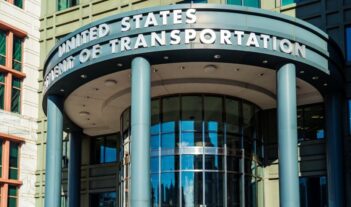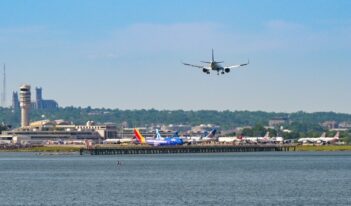
Congress limits administrative safety regulation while offering financial safety net.
Commercial space transportation should be as safe as a flight to Hawaii, argues the Federal Aviation Administration (FAA). The FAA has been vying Congress for increased industry regulatory control, after projecting a dramatic surge in commercial space travel over the next ten years.
Congress has been reluctant to regulate commercial space transportation, fearing that the industry could be stunted before it gets off the ground.
The increase in commercial demand stems from the recent growth in government space contracting, satellite launches, and space tourism. Companies, like SpaceX and Orbital Sciences Corporation, have been consistently acquiring government contracts to resupply the International Space Station—a project that was recently extended until 2024 and promises further expansion of commercial space flights. At the same time, the commercial satellite service industry has grown considerably as media needs have expanded. Finally, commercial space tourism has recently emerged as a viable industry expected to generate one billion dollars within ten years.
This year, Congress must decide whether to continue its “hands off” approach to regulating space travel: the Commercial Space Launch Act (CSLA), a piece of legislation defining the extent of the FAA’s regulatory power, is due for an update.
Currently, the FAA’s power is limited to licensing launches and indemnifying launch providers from third-party claims after an accident. Congress has explicitly barred the FAA from writing any safety regulations affecting the spaceflight industry until 2015. In response, the FAA has begun arguing in front of the House that its role should be formally expanded well beyond launch licenses, towards overall safety regulation, now that commercial launches are becoming more common. The agency has previously issued recommendations to industry participants to encourage systematic risk analysis and risk mitigation, but these recommendations are non-binding on industry players.
The National Aeronautics and Space Administration (NASA)—usually considered the public face of space travel—is not an industry regulator.
George Nield, the FAA administrator for commercial space travel, has publicly stated that he wants to see the industry function more like the commercial airline industry. The comparison between these two industries seems particularly timely, since Virgin Galactic plans to shuttle its first passengers into sub-orbital space this year. Currently, passengers on suborbital flights must simply sign a waiver acknowledging and consenting to the risks—they do not have any legal protections at this time. However, some commentators remain unconvinced. They argue that the nature of space travel makes the industry inherently more dangerous than the commercial airline industry. They note the high-energy demands and the “inhospitable” nature of space as two factors that are unique to this sector.
Discussions over the role and value of expanding regulation are occurring at a time when space transportation is growing considerably after a sudden spike in interest from private companies. According to agency forecasts, the demand for commercial space launches will increase significantly in the near future. Demand is expected to reach an average of around thirty-one commercial flights per year between 2013 and 2022. By contrast, in the previous ten years, there has been an average of five commercial launches per year. Indeed, the FAA has only licensed a total of 222 launches thus far—a figure that pales in comparison with future commercial flight projections.
The FAA has argued that the industry’s expansion supports broader regulation. Presently, the FAA cannot write or enforce safety regulations over actual flights. Henry R. Hertzfeld, an expert in space policy, has argued that the likelihood of catastrophic accidents is gradually increasing as space becomes more crowded with debris. The FAA has similarly referenced NASA calculations suggesting a sixty percent increase in debris since 1998, as a result of increased space traffic. According to the FAA, these figures alone suggest that licensing is not enough to ensure safety.
If an accident does occur, financial liability for damages is shared between the U.S. government and the private launch company. According to statutory requirements, if a commercial spaceflight company experiences a catastrophic accident, then the FAA must cover over $2.5 billion in damages for third-party injury. This FAA coverage is triggered automatically if damages from the accident exceed five hundred million dollars in costs—the coverage maximum for private companies in this industry. The FAA’s cost coverage is based on an indemnity provision in the CSLA that is intended to ensure that damage is addressed, regardless of a company’s ability to pay. Congress has extended this provision five times since 1999.
At this time, it is not certain how Congress will react to the changes in the space travel industry. However, comments by the House Subcommittee on Space suggest some reluctance to expand the FAA’s regulatory powers. Since the commercial space industry is still in its nascent stage, members of Congress have been vocally reluctant to “suffocate” or “trample” the nascent industry.



